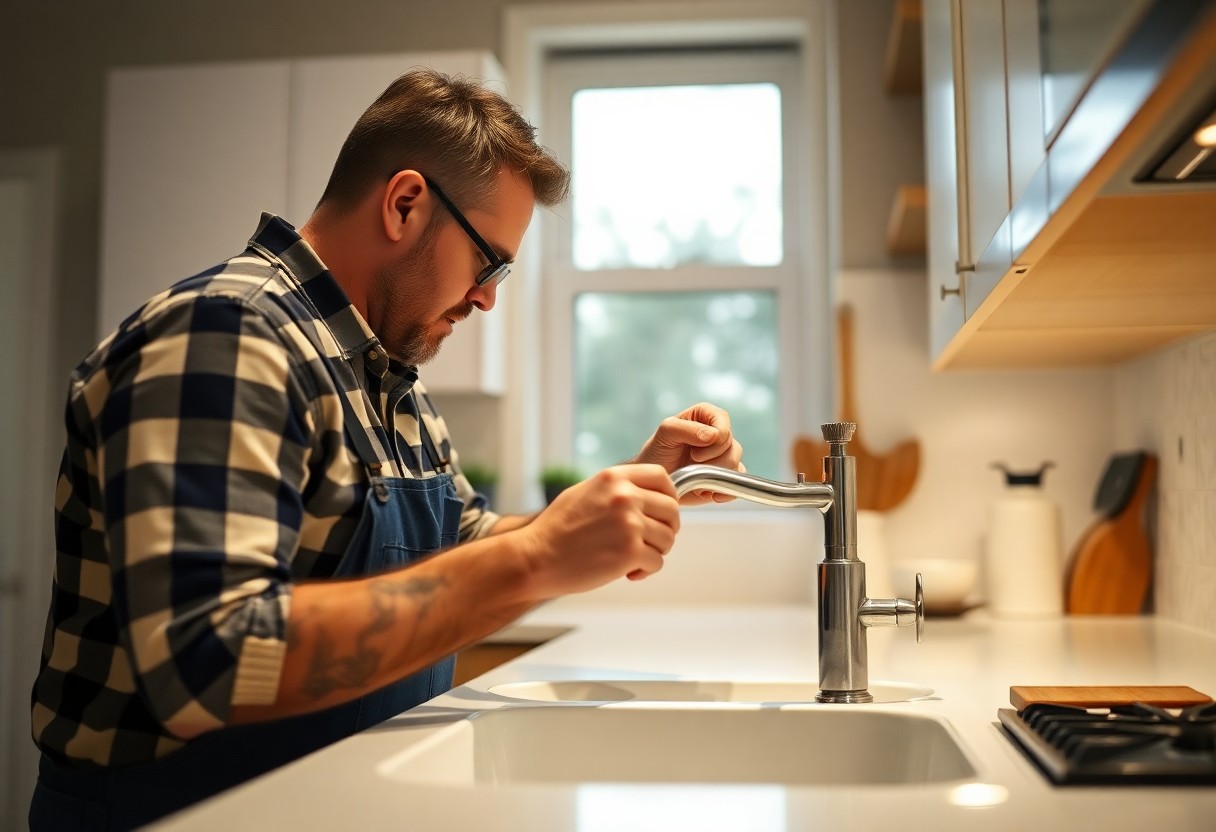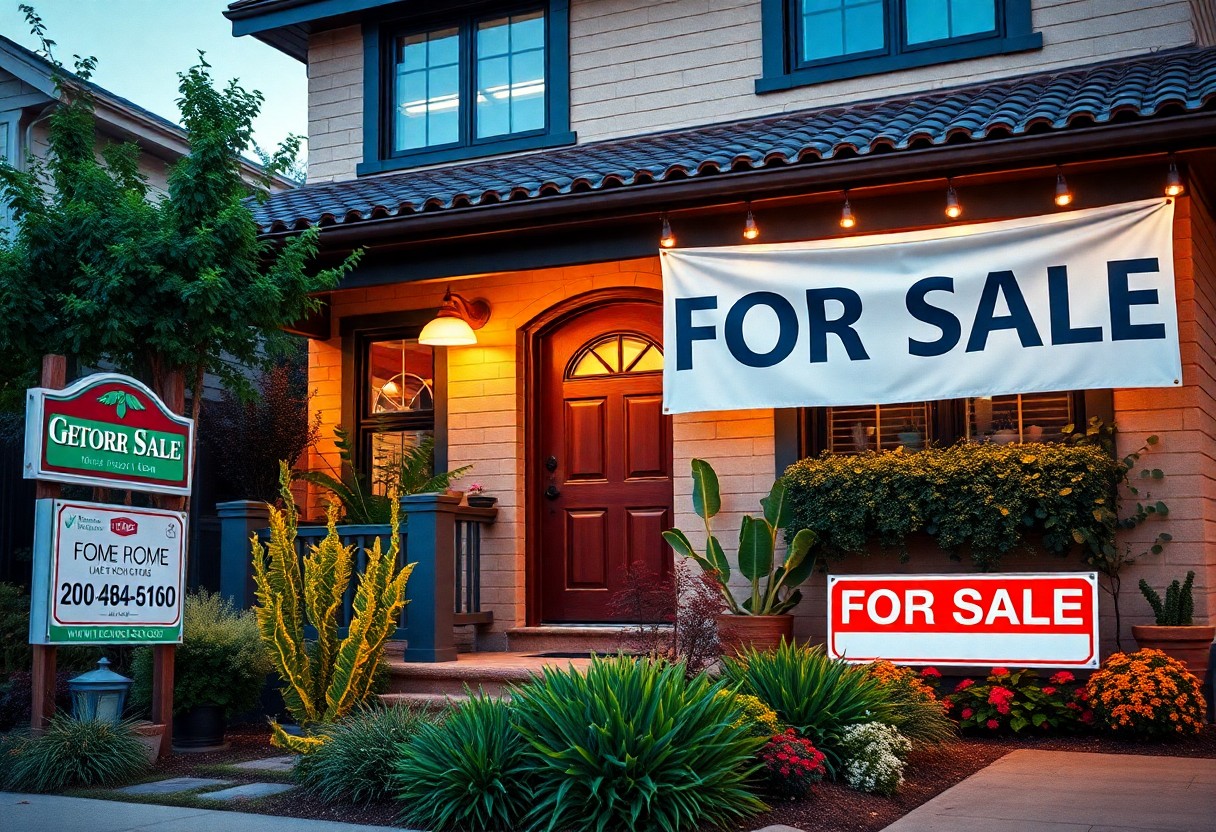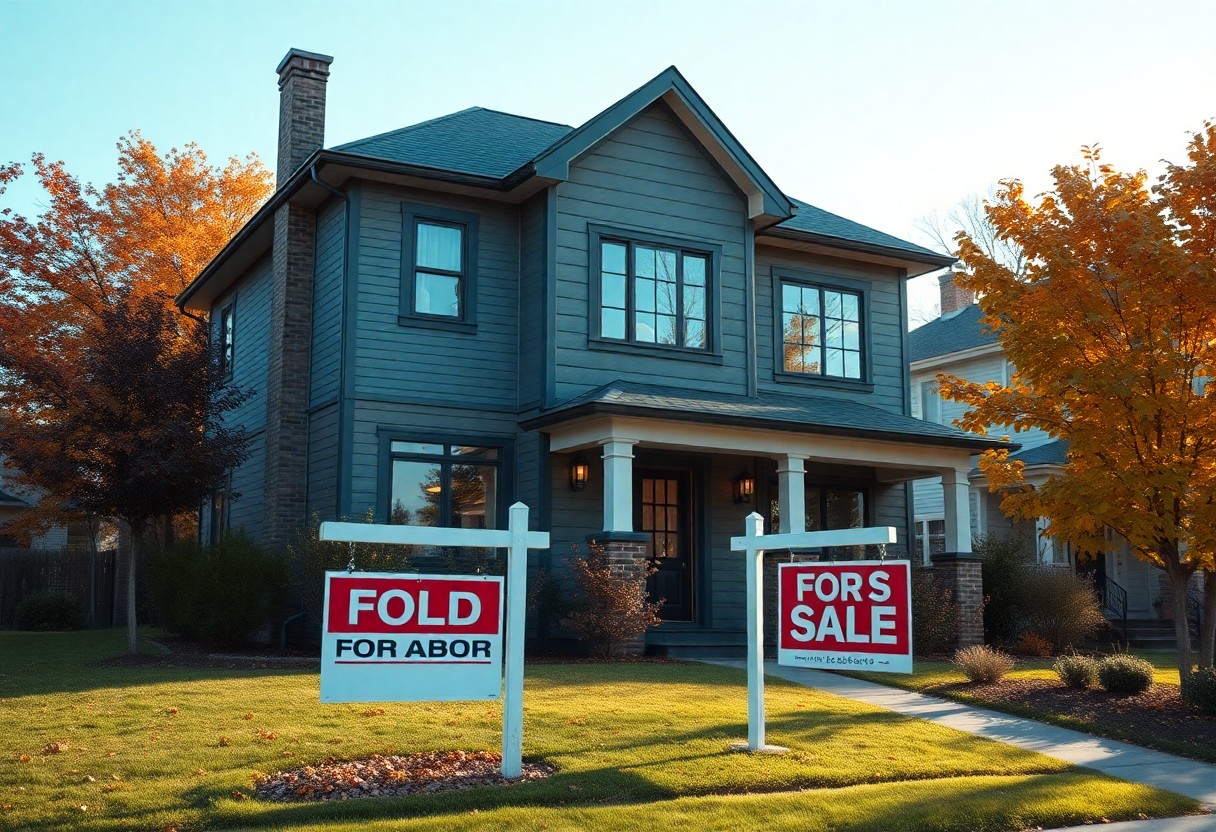Most buyers are drawn to homes that are not only well-maintained but also move-in ready, making it crucial for you to address necessary repairs before listing your property. Ignoring these repairs can lead to lower offers or even lost sales, diminishing your potential profit. By investing time and resources into fixing minor issues, you can significantly enhance the appeal of your home, ultimately increasing its market value. In this guide, you’ll learn effective strategies to tackle repairs that will help you achieve top dollar for your home.

Key Takeaways:
- Evaluate the condition of your home thoroughly to identify necessary repairs and improvements.
- Prioritize repairs that enhance curb appeal, such as landscaping and exterior paint.
- Focus on kitchen and bathroom updates, as these typically yield the highest return on investment.
- Address any plumbing or electrical issues, as buyers are wary of potential hidden problems.
- Consider investing in a pre-inspection to uncover issues before potential buyers do.
- Keep documentation of repairs and improvements to share with prospective buyers.
- Set a budget for repairs and enhance your home without overspending, focusing on cosmetic fixes that appeal to buyers.

How To Assess Your Home’s Condition
Before selling your home, it’s important to understand its current condition. Take a walkthrough to identify potential issues, such as plumbing leaks or electrical problems, that could affect your sale price. For a comprehensive guide, check out 7 Important Repairs to Make Before Selling A House.
Identifying Key Areas for Repair
There’s a variety of areas in your home that may need attention before sale. Focus on high-impact spaces like kitchens and bathrooms, as well as curb appeal elements like landscaping and paint. You should aim to make repairs that enhance the overall presentation of your property.
Utilizing Professional Inspections
For a more thorough evaluation, consider hiring professional inspectors to assess your home. These experts can identify any hidden issues such as structural damage, HVAC concerns, or pest infestations that may not be easily visible. Their insights provide you with a clear understanding of necessary repairs and can help you prioritize your efforts. Addressing these issues before listing your home can lead to a more attractive offer and a smoother selling process.
Professional inspections not only uncover major concerns but can also provide recommendations for maintenance that enhances your home’s appeal. You’ll be armed with thorough reports outlining necessary repairs, allowing you to make informed decisions. By tackling major issues before selling, you show potential buyers that you’ve taken good care of your home, which can lead to higher offers and a faster sale.
1. Inspect your home thoroughly for needed repairs.
2. Prioritize repairs that increase home value effectively.
3. Hire licensed professionals for complex repair tasks.
4. Provide documentation of repairs to potential buyers.
5. Clean and stage your home for showings.
6. Set a competitive price after repairs are completed.
Tips for Prioritizing Repairs
Any homeowner preparing to sell should focus on identifying and prioritizing necessary repairs to maximize their home’s appeal and value. Consider the following tips:
- Assess your home’s condition
- Focus on cost-effective repairs
- Identify high-return projects
- Consult with an expert if needed
This approach ensures you tackle the most important repairs first, making your home more attractive to potential buyers.
Focusing on High-Impact Areas
Areas such as the kitchen and bathrooms often yield the highest returns on your investment. Concentrating on these spaces can dramatically enhance the overall appeal of your home. Updating fixtures, freshening up paint, and ensuring appliances are in good working order can create a more welcoming and modern atmosphere that attracts buyers.
Budgeting for Repairs
High-impact repairs should fit within the budget you’ve allocated for selling your home. Look at your finances to ensure you can comfortably cover necessary repairs without compromising your financial stability. It’s wise to prioritize repairs that offer the best ROI, enhancing your home’s value without breaking the bank. Always allocate a portion of your budget for unexpected issues that may arise during the selling process.
Prioritizing your home repairs effectively means focusing on elements that not only enhance aesthetics but also improve safety and functionality. Identify and address urgent issues that pose risks, such as electrical or plumbing problems, but don’t overlook smaller upgrades like fresh paint and landscaping, which can significantly boost curb appeal. This strategy will ensure your home is competitive on the market and appealing to potential buyers.
How To Make Cost-Effective Repairs
Many homeowners underestimate the impact of minor repairs on their home’s value. By focusing on cost-effective upgrades, you can enhance your property’s appeal without breaking the bank. Simple fixes such as fresh paint, landscaping updates, and minor plumbing repairs can dramatically improve the overall impression of your home, leading to higher offers from potential buyers.
DIY vs. Hiring Professionals
With the right tools and a bit of research, you can tackle many home repairs yourself to save money. However, for larger or more complex tasks, hiring professionals may be a wise investment. Assess your skills and the nature of the repairs needed to determine the most effective approach that balances both effort and outcome.
Sourcing Affordable Materials
Hiring affordable materials is crucial in maintaining your budget while making necessary repairs. Look for discount suppliers, online marketplaces, or salvage yards where you can find quality materials at lower prices. By shopping around, you can ensure that you get the best deals for your home improvement projects.
For instance, visiting local habitat for humanity stores or checking out clearance sales in home improvement stores can yield significant savings on materials like tiles, doors, and fixtures. Additionally, consider buying second-hand items that have been gently used, as they can provide the same aesthetics and functionality at a fraction of the retail price. Keeping an eye on your neighborhood’s online marketplace can also lead to unexpected deals while promoting sustainability in your home renovations.
Factors That Influence Repair Decisions
Not all repairs are created equal. Various factors must be considered before you decide what to fix. This includes:
- Cost: How much will the repairs set you back?
- Return on Investment: Will the repairs boost your home’s value?
- Market Conditions: How is your local real estate market performing?
- Buyer Expectations: What do potential buyers find appealing?
Perceiving the right balance between cost and value will help you make informed repair decisions.
Market Trends and Buyer Preferences
With the ever-changing landscape of real estate, staying updated on market trends and buyer preferences is crucial. Understanding what buyers desire—such as energy-efficient features or modern aesthetics—can guide your repair choices, ensuring you attract more interest and potentially higher offers.
Neighborhood Comparisons
Assuming you’re considering repairs based on your neighborhood’s market, it can be beneficial to compare your home to others in your area. Use the following table to assess what comparable properties offer:
Neighborhood Comparisons
| Your Home | Comparable Homes |
|---|---|
| Age and condition of home | Recent upgrades and renovations |
| Unique features (e.g. pool, garden) | Standard features (e.g. basic appliances) |
| Asking price | Final selling prices of nearby homes |
Decisions about repairs should stem from a detailed analysis of how your home stacks up against comparable properties. By evaluating features, condition, and price points, you can identify which repairs will provide the greatest return on investment. Prioritizing upgrades that align with neighborhood standards enhances your home’s appeal and optimizes the sale potential.
Further Insights on Neighborhood Comparisons
| Considerations | Action Steps |
|---|---|
| Assessing local amenities | Research available parks, schools, and shops near your home |
| Identifying buyer demographics | Find out what types of buyers are looking in your neighborhood |
| Tracking recent sales | Monitor sales trends to gauge repair importance |
Your perception of the neighborhood’s marketplace can significantly impact pricing and repairs, leading to more strategic decisions that will ultimately benefit your sale.
How To Stage Your Home After Repairs
All aspects of staging your home are vital to making a lasting impression and ensuring you attract the right buyers. After making necessary repairs, it’s time to showcase your home’s best features. Proper staging can highlight the improvements you’ve made while helping potential buyers envision themselves in the space.
Enhancing Curb Appeal
On the exterior, first impressions matter. Boost your home’s curb appeal by maintaining a clean yard, trimming hedges, and adding fresh flowers or plants. Simple updates like a new front door mat or a coat of paint on the front door can make a significant difference, enticing buyers as they approach your home.
Creating an Inviting Interior
For the interior, aim to create a warm and welcoming atmosphere that resonates with potential buyers. Start by decluttering your space and rearranging furniture to maximize flow and usability. Clean all areas thoroughly to ensure they shine, and consider neutral colors for walls to enable buyers to envision their personal style.
Your goal is to evoke a sense of comfort and livability in your home. Use soft lighting, add cozy textiles, and incorporate pleasant scents by using candles or fresh flowers. Make sure each room feels inviting and organized, allowing buyers to see the full potential of your home. These small yet impactful details can set your home apart in a competitive market and create a lasting impression that lingers long after they leave.
How To Set the Right Price After Repairs
Once again, setting the right price after making repairs is vital for attracting buyers and maximizing your profit. Conducting a thorough assessment of your home’s condition and comparing it with similar properties in your area will help you establish a fair price that reflects the improvements you’ve made while still remaining competitive in the market.
Evaluating Market Value
Now, you should analyze recent sales data for homes in your neighborhood to determine a reasonable price range. Factors like location, size, and condition will greatly influence how potential buyers perceive your home’s value, so it’s important to stay informed about the current market trends.
Consulting with Real Estate Experts
Experts can provide invaluable insights into your local market and help you set a competitive price for your home.
Market analysis can vary significantly, and real estate professionals have the tools and experience to spot trends that you might overlook. They will assess your home’s features, highlight your repairs, and provide a comparative market analysis (CMA) to suggest an educated price point. Engaging experts can significantly increase your chances of a quick sale, as their advice will keep you from pricing too high or too low, both of which can lead to missed opportunities.
Final Words
As a reminder, addressing repairs before selling your home can significantly enhance its appeal and value. By identifying and fixing issues, you not only increase your home’s marketability but also resonate with potential buyers seeking move-in-ready properties. Invest time in inspections, prioritize necessary repairs, and consider cosmetic updates to create a lasting impression. Ultimately, taking these steps can lead to a smoother sale and help you achieve the top dollar you deserve for your property.
FAQ
Q: Why is it important to address repairs before selling my home?
A: Addressing repairs before selling your home can significantly enhance its appeal to potential buyers. A well-maintained home creates a positive impression, can lead to higher offers, and may reduce the time your property sits on the market. Buyers often look for move-in-ready homes, and addressing repairs can instill confidence in your property’s condition.
Q: What types of repairs should I focus on before selling?
A: Focus on repairs that affect the safety, functionality, and aesthetics of your home. Common areas include fixing leaks, addressing electrical issues, ensuring heating and cooling systems work efficiently, repairing or replacing broken tiles, and freshening up paint. Additionally, consider the condition of your roof and siding, as these can also impact buyer perceptions.
Q: How can I determine which repairs are necessary?
A: Conduct a thorough inspection of your home or consider hiring a professional home inspector. Their expertise can help identify issues you may overlook. As you inspect, also consider buyer expectations for your area. Consulting with a real estate agent can provide insights into what features are appealing in your market.
Q: Should I make minor cosmetic updates, and if so, which ones?
A: Yes, minor cosmetic updates can make a significant difference in how your home is perceived. Consider painting walls in neutral colors, upgrading light fixtures, or refreshing landscaping. Simple changes like cleaning or replacing worn-out hardware or fixtures can also elevate the home’s overall appearance without breaking the bank.
Q: What repairs might I need to make for more significant issues?
A: For more substantial issues, consider prioritizing items like plumbing repairs, foundation issues, and outdated electrical systems. While these repairs may require a larger investment, they can prevent buyers from walking away due to perceived risks. It’s often best to tackle these problems early to facilitate a smoother sales process.
Q: How should I handle repairs on older homes?
A: For older homes, acknowledge the charm that age can bring, but don’t ignore necessary repairs. Focus on preserving historic elements while ensuring safety and functionality. It’s vital to comply with local building codes, especially when making significant upgrades. Be transparent with buyers regarding the home’s history and the repairs undertaken.
Q: Can I sell my home as-is without making any repairs?
A: Selling your home as-is is an option, but it might not yield the best financial outcome. Properties needing repairs may attract lower offers or deter interested buyers. If you choose this route, be prepared for negotiations around repair costs or consider pricing the home lower to account for needed updates.



